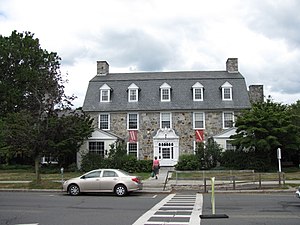Letter: Repairs To Jones Library Could Cost Less Than You Think

Jones Library. Photo: wilkipedia.org
The failure of the Jones Library project appears to have come as a surprise to those who had ill prepared for the possibility. While the lack of planning and foresight is indeed a regrettable situation there are means to at least improve the current conditions at the building. Wringing of hands will not fix the roof leaks nor will it repair the furnace. Utilizing the services of an energy performance contracting company can fix the problems that were long ignored.
The library, as a private non profit organization, could immediately engage such a company and have the roof repaired as part of a solar project. The heating and cooling system can be replaced with a ground source heat pump system (GSHP). Thanks to available tax credits for solar and GSHP, the work cuold be accomplished rapidly if appropriate planning is instigated and the cost could be less than the present cost of heating and cooling on an annual basis.
Craig Meadows
Craig Meadows is an energy consultant and a member of Amherst’s Zoning Board of Appeals.

Thank you, Craig.
In addition, repairs to the historic Jones Library would be eligible for CPA funds, and since the CPA Committee already approved $1m for the library project, it doesn’t seem a stretch to think that that same amount could be allocated toward library building repairs.
There’s also the prospect that some of the donors of the $2,285,854 to the Community Campaign would allow their donations to be diverted to building repairs, as suggested by Ken Rosenthal. Even if only a quarter of donors agree to give the funds toward a smaller repair project, that would still be ~$570,000.
There’s also the $1.8 million that the Library has committed to putting toward repairs should the expansion project not proceed, per the Memorandum of Agreement with the Town.
Thank you very much, Craig, for recommending ground source energy for heating and cooling the Jones Library building!
In 2010, Trustee Carol Gray and I accompanied the president of the Dragin geothermal energy company around the building when he was preparing an estimate. He determined that it was feasible for the building, and would take 21 wells. In addition, the inside equipment would take up less space than the present boilers, etc. For energy-saving, cost-saving, and space-saving reasons, I’d be very glad to see this happen.